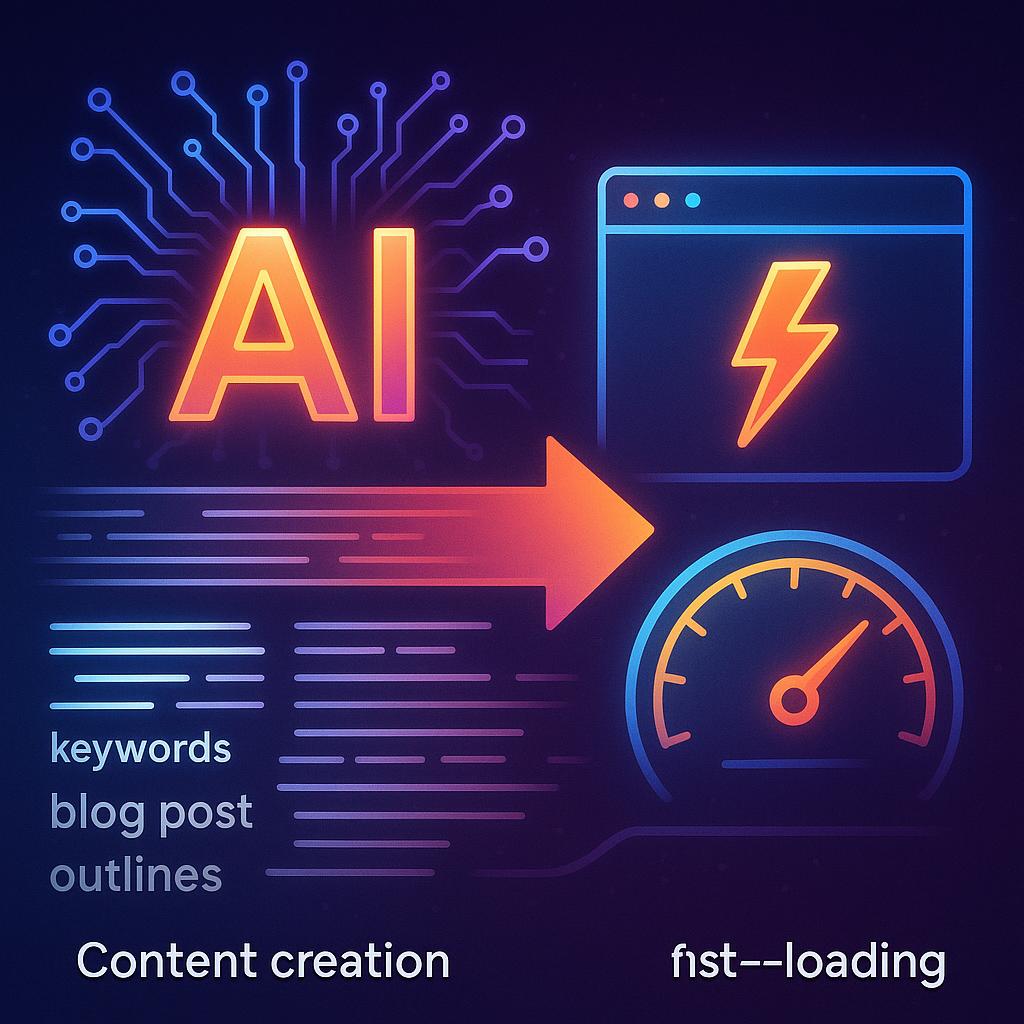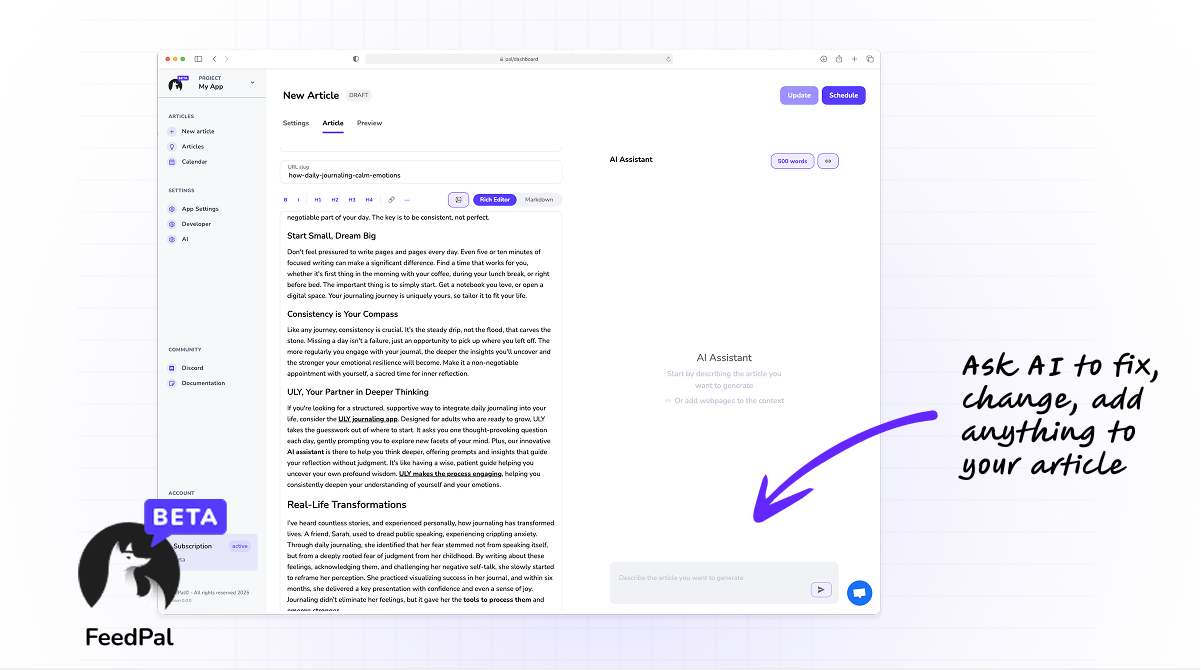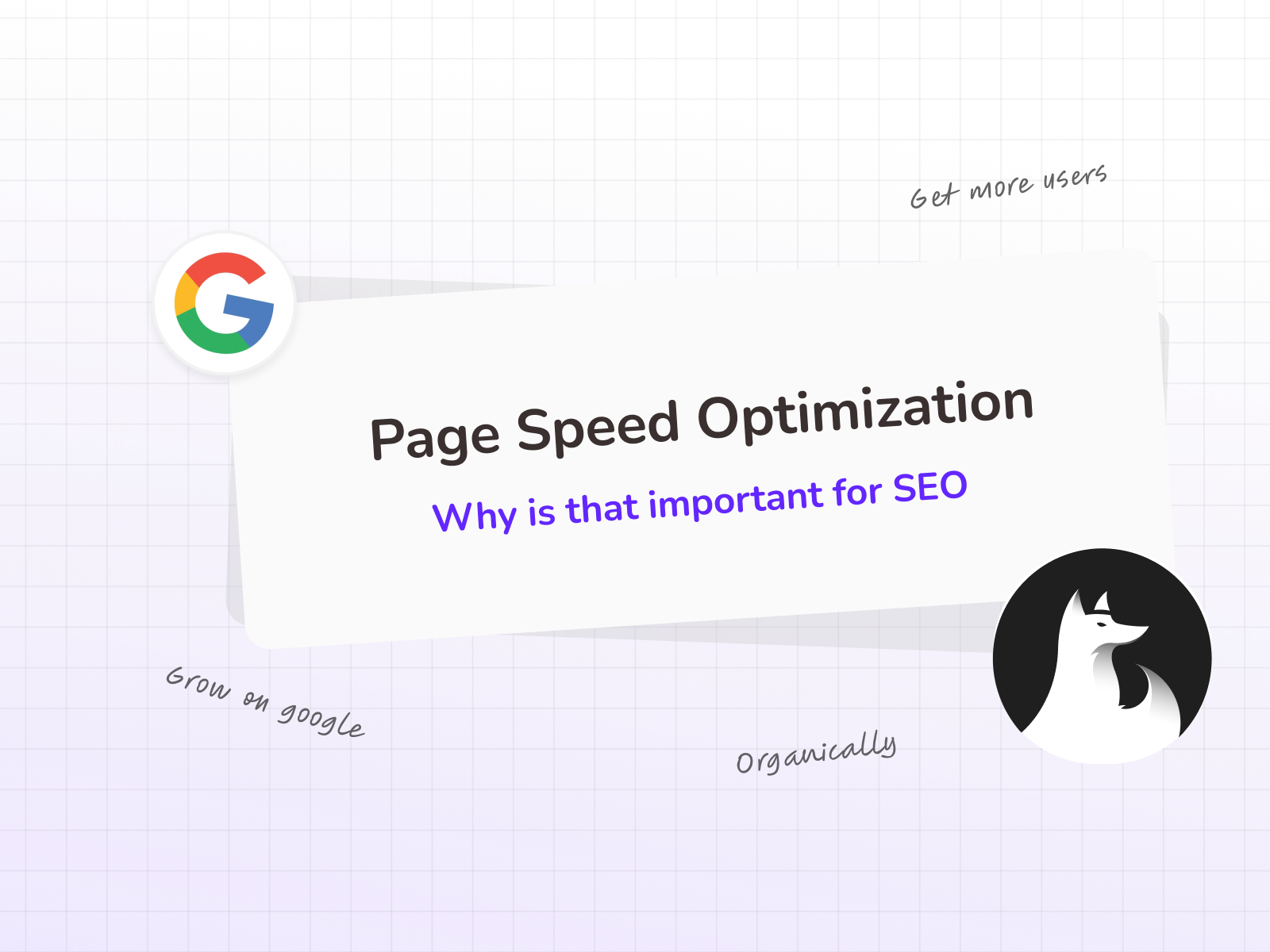Page speed optimization isn't just a nice little bonus. It's totally critical. It affects everything, from where you land on Google to how long folks actually stick around on your site.
Seriously, when you click a link, how long are you really willing to wait for a page to pop up?
Most people expect things to load almost instantly.
If your site drags its feet, those potential customers won't just wait patiently. Nope, they'll simply bail.
The more people wait, the more you lose them.
This article will break down exactly why beefing up your page speed is so vital for both getting seen by search engines and keeping your users hooked. Ultimately, it helps turn those casual visitors into loyal customers.
What Exactly is Page Speed?
So, what are we really getting at when we talk about "page speed"? It's just how quickly all the stuff on your web page actually shows up.
This isn't only about the total loading time, mind you. It also covers how fast individual elements pop up and become clickable or usable. Google, and really, your users, care deeply about a few key metrics that signal a snappy, smooth experience.
These metrics fall under what Google calls Core Web Vitals. Think of them as a handful of user experience measurements. They actually gauge the real world feel for how well a page loads, how interactive it is, and if it stays visually stable. They include:
- Largest Contentful Paint (LCP): This one clocks the time it takes for the biggest piece of content on your page, say a huge image or a thick chunk of text, to actually appear in view. A good LCP score usually hits 2.5 seconds or less.
- First Input Delay (FID): This measures the gap from when a user first interacts with your page, like tapping a button or a link, until the browser actually responds to that tap or click. You're aiming for an FID of 100 milliseconds or less. That’s ideal.
- Cumulative Layout Shift (CLS): This is all about how stable your page looks. You know that feeling when you're reading an article, and suddenly the text bounces around because an ad finally loaded up top? Makes you lose your spot, right? That’s layout shift. A low CLS score, something super close to zero, means your page elements are rock solid and won't unexpectedly jump on you.
These metrics, together, paint a full picture of how your page loads and how a user genuinely experiences your site. They go way beyond just basic load times to capture the true essence of how fast a site feels and how easy it is to use.
Why Page Speed Matters for SEO
If you're a founder fixated on organic growth, then search engine optimization, or SEO, is absolutely crucial. Page speed isn't just a friendly tip. It's a direct ranking factor for Google, plain and simple.
This has been known for ages, with Google openly saying that quicker sites generally do better in search results. Here's why:
- Google Prioritizes User Experience: Google's whole game is about serving up the absolute best search results to its users. A website that loads fast gives a much better user experience, which perfectly matches Google's mission. If your site is dragging, it quietly signals to Google that your users might not be having a great time. That could, in turn, nudge your rankings down.
- Core Web Vitals as a Ranking Signal: Since 2021, Core Web Vitals officially joined the ranks as a ranking signal. That means your LCP, FID, and CLS scores directly impact where you show up on search engine results pages. Sites rocking strong Core Web Vitals get a definite nod, especially for mobile searches.
- Improved Crawlability and Indexing: Search engine bots, like Googlebot, tirelessly scour the internet for new and updated content. A faster website lets these bots zip through more pages in the same amount of time. This translates to your fresh blog posts or updated product pages getting found and indexed way faster. Meaning, your valuable content sees the light of day quicker.
- Mobile First Indexing: Let's face it. Most internet users are checking stuff out on their mobile devices. Google uses your mobile site's version for both indexing and ranking. So, if your mobile site is sluggish, it'll absolutely ding your overall SEO performance. Even if your desktop site is super snappy.
Bottom line: a fast website tells Google you genuinely care about your users. It shows you're giving them a smooth, efficient experience. This positively bumps up your organic visibility and helps your content climb higher, bringing in more of that sweet, sweet organic traffic.
The Impact of Page Speed on User Engagement
Beyond just SEO, page speed dramatically impacts how users actually interact with your website. Just think about your own online habits for a second. Impatience is practically a default setting in our digital era. Users simply expect speed.
If your site can't keep up with those expectations, you're literally pushing away potential customers.

- Reduced Bounce Rate: This is often the first, most noticeable impact. Your bounce rate is that percentage of visitors who hit a page and then just leave without doing anything else. If your page takes forever to load, visitors will just hit that back button. Hello, high bounce rate. Studies have actually shown that even a single second delay in page load time can seriously cut down on conversions and pump up that bounce rate. For example, a two second delay can make bounce rates jump by over 100%.
- Improved User Experience (UX): A fast website just feels right. It feels responsive, professional, and trustworthy. Users are way more likely to enjoy their time on your site, dig into more pages, and engage with your content when everything just flows. This builds trust and sets your brand up nicely in their heads.
- Higher Conversion Rates: Whether you're aiming for newsletter signups, product purchases, or demo requests, a faster website directly leads to better conversion rates. Folks are far less likely to abandon their carts or forms if the whole process is quick and smooth. For example, Amazon figured out that every 100 milliseconds of delay cost them 1% in sales. Just think what that adds up to for a nimble SaaS business.
- Enhanced Brand Perception: A fast, slick website really shines a positive light on your brand. It screams efficiency, professionalism, and a genuine commitment to delivering a top notch experience. On the flip side, a slow site can make your business seem outdated or just plain flaky.
How Page Speed Affects Your Blog Content
As founders and indie makers, you're often pouring serious time and effort into crafting valuable blog content. You're writing founder stories, practical guides, and sharing industry insights. All to attract and teach your target audience.
But what if your brilliantly written article never actually gets read because the page takes ages to load?
Slow page speed just completely sabotages your content marketing efforts. A potential customer clicks on your beautifully SEO optimized blog post, totally ready to soak up your insights on, say, scaling a SaaS business. If that article takes five seconds to load, their initial excitement vanishes fast. They might even close the tab before your valuable advice even shows up. This then leads to:
- Lower Time on Page: If users bail on your blog post too fast, your time on page metric will definitely take a hit. This quietly tells search engines that your content might not be as engaging as it first seems, potentially impacting your future rankings.
- Fewer Pages Per Session: Users are just less inclined to click over to other related articles or check out your product pages if their first experience was annoying. This means less engagement with your broader content universe.
- Reduced Shares and Backlinks: If folks aren't actually reading your content, they can't share it or link to it. Simple as that. This puts a cap on the organic spread and authority building you're striving for. Your well researched pieces truly deserve to be seen and valued. A slow loading time just builds a huge wall against that.
Your content is a cornerstone of your marketing strategy. It drives organic traffic and builds credibility. Don't let sluggish load times stop your audience from getting to and truly valuing your hard work.
Common Causes of Slow Page Speed
Lots of things can make a website sluggish. Knowing these common culprits is the very first step toward figuring out and fixing your speed headaches:
- Large, Unoptimized Images: High resolution images that haven't been compressed or correctly sized for the web are usually the prime suspects. They can eat up a huge chunk of your page's total file size.
- Excessive and Unoptimized Code: Unminified CSS, JavaScript, and HTML files, especially ones packed with extra characters or comments, can really bloat your page size. They also slow down parsing time. Too many external scripts, things like tracking codes or third party widgets, just add more weight.
- Too Many Plugins and Themes: Sure, plugins add functionality, no doubt. But each one tacks on code and potential performance drag. Themes that are overly complex or just badly coded can also really weigh your site down.
- Poor Hosting: Shared hosting plans are cheap, granted. But they can sometimes just lack the muscle to handle traffic spikes or big websites efficiently. The quality of your server and how close it is to your audience matters a lot too.
- Lack of Caching: Without proper caching, your server ends up doing extra work every single time a page gets requested. This slows down delivery.
- Render Blocking Resources: Sometimes, your browser has to fully load specific CSS or JavaScript files before it can even show any content on your page. This creates a noticeable delay in how fast the page feels like it's loading.
Prefer using low-level technology. to create your website.
For example, Astro is way more optimized than Wordpress.
Also Wordpress is really often the source of security breaches, because of it's popularity and the number of required extensions that may have issues.
Practical Strategies to Boost Your Page Speed
Beefing up your website's speed doesn't have to feel like a massive chore. Here are some practical steps you can take to see some serious improvements:
- Optimize Your Images: This is often the fastest, easiest win. Compress your images using tools like TinyPNG or ImageOptim. Use modern formats such as WebP. And definitely implement lazy loading so images only load right before they're actually seen.
- Minify CSS, JavaScript, and HTML: Get rid of all those unnecessary characters, comments, and extra spaces from your code. This shrinks file sizes and makes the browser parse things quicker.
- Leverage Browser Caching: Set up your server to tell browsers to save static files. Think images and CSS. Store them right there on the user's device. This way, when someone comes back to your site, those elements load instantly because they're already sitting on their machine.
- Use a Content Delivery Network (CDN): A CDN essentially stashes cached copies of your website's content on servers spread out globally. When a user hits your site, the content gets served up from the server nearest to them. This drastically cuts down on any delays.
- Choose a Fast Web Host: Put some money into a reputable hosting provider. One that truly offers good performance. Ideally, they'll have server locations close to your target audience. Simply upgrading from basic shared hosting can often bring about huge improvements.
- Reduce Redirects: Too many redirects can create extra HTTP requests. This really slows down your page. Go through your site and ditch any redirects you don't actually need.
- Prioritize Mobile Responsiveness: Make sure your site isn't just "mobile friendly." It needs to be genuinely optimized for speed on mobile devices. Think about smaller screens and potentially slower connections.
- Eliminate Render Blocking Resources: Find and put off loading JavaScript and CSS that aren't absolutely critical for the page's first appearance. Load them asynchronously. This lets your content show up much faster.
Measuring Your Page Speed
You simply can't fix what you don't measure, right? Good news, though! There are some fantastic free tools out there to help you analyze your website's performance and zero in on what needs improving:
- Google PageSpeed Insights: This tool gives you a thorough report for both your mobile and desktop sites. It hands out scores for Core Web Vitals and even offers specific tips for optimization.
- GTmetrix: This tool dives deep into your page's performance. It even includes a waterfall chart that literally shows you what loads when. Super helpful for spotting those pesky bottlenecks.
- WebPageTest: If you're looking for more in depth analysis, WebPageTest lets you test your site from various locations and with different browsers. It spits out super detailed data on load times and resource requests.
Use these tools often to track your progress. Make sure your optimization efforts are actually paying off. Keep in mind: ongoing monitoring and small, continuous improvements are absolutely key.
The Synergy: Fast Content + AI Powered Creation
As an ambitious founder or indie maker, you already get it. You know the power of great content when it comes to driving organic traffic. You're probably on the hunt for ways to scale up your content creation efficiently. And that's exactly where tools like FeedPal come into play.
FeedPal is an AI writer assistant. It's built to help you create blog articles and schedule them. It really boosts your visibility on search engines. It lets you write like a human and even helps you find article ideas with serious potential.
Here's the kicker: you can use FeedPal to whip up a truly engaging, SEO optimized blog post. One that's packed with valuable insights. This article is perfectly suited for your audience. It's ready to attract organic traffic. But if your website is slow, all that hard work crafting perfect content can just go to waste.
The true magic happens when you combine high quality, relevant content with a lightning fast delivery system.

FeedPal helps you go from an idea to published SEO optimized articles that drive organic traffic. All in one click. It empowers you to push past the frustration of not having enough time or expertise to write frequent, SEO friendly content. Still, the best content in the world needs a fast vehicle to truly reach its audience effectively.

Optimizing your page speed makes sure every fantastic article you whip up with FeedPal lands swiftly in front of your eager readers. This maximizes its impact and directly helps hit your growth goals.
Conclusion
Page speed optimization isn't just some tech chore for developers. It's a fundamental part of your entire business strategy. For founders and startup entrepreneurs trying to boost visibility, drive organic traffic, and build credibility, a fast website is simply non negotiable.
It's a critical SEO ranking factor.
By getting what makes up page speed, seeing its deep impact on SEO and user engagement, and actually putting practical optimization strategies into play, you're building a solid foundation for sustainable online growth. Don't let a sluggish website hold you back. Put in the time to speed up your site. Then, watch as your SEO rankings climb, your bounce rate drops, and your valuable content hits a broader, more engaged audience.
